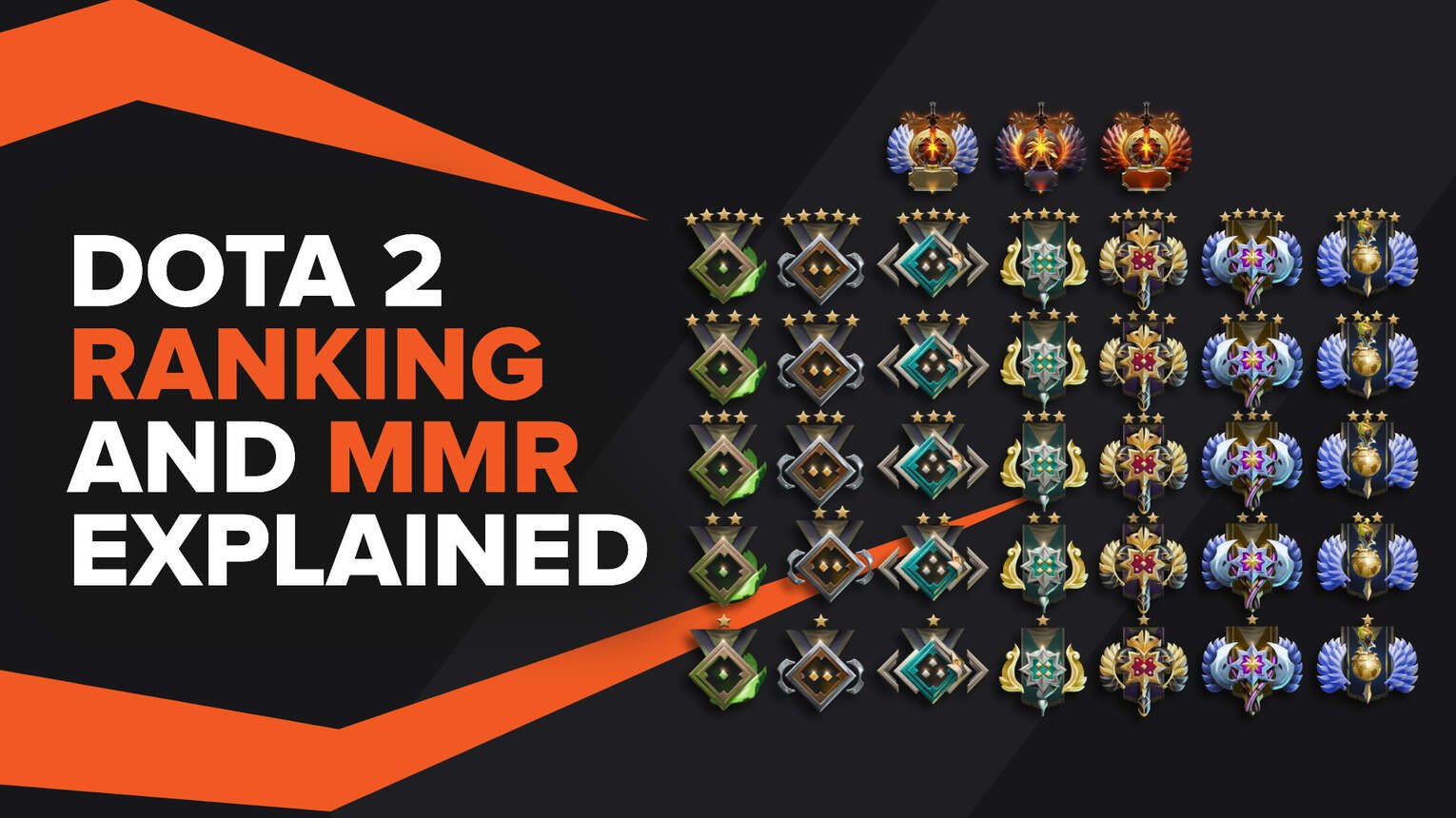
Dota 2 ranking system is great for both newbies and professionals. It separates players with limited knowledge from seasoned veterans. That way, everyone is able to enjoy the game at their own pace while playing appropriate competition.
In this ultimate Dota 2 ranking guide, we will talk about the ranks, MMR, and everything in between.
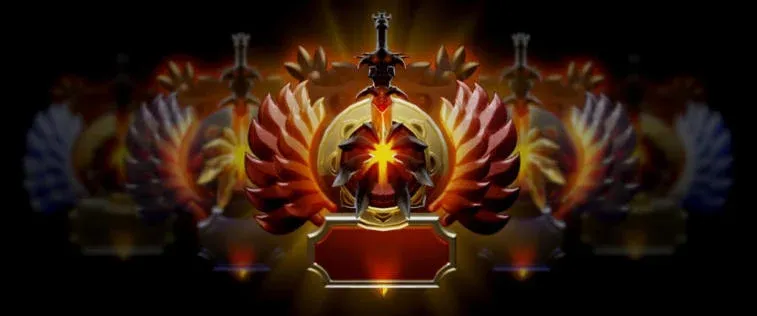
What are Dota 2 ranks and their MMRs?
There are a total of 36 ranks in Dota 2. They determine the players’ skill levels, and higher ranks are a source of pride for many gamers. Here is a list of all the ranks:
- Herald (0 to 720 MMR)
- Guardian (840 to 1560 MMR)
- Crusader (1680 to 2400 MMR)
- Archon (2520 to 3240 MMR)
- Legend (3360 to 4080 MMR)
- Ancient (4200 to 4920 MMR)
- Divine (5040 to 5760 MMR)
- Immortal (6000+ MMR)
Each one of these ranks has 5 subcategories (i.e., Herald 1, Herald 2..) except for Immortal. Once you reach Immortal, you can only get a special designation if you reach the top 1000 positions on a server (i.e., Immortal 936, Immortal 576, Immoral 4, etc…). These are the highest ranks with the highest MMRs in Dota 2.
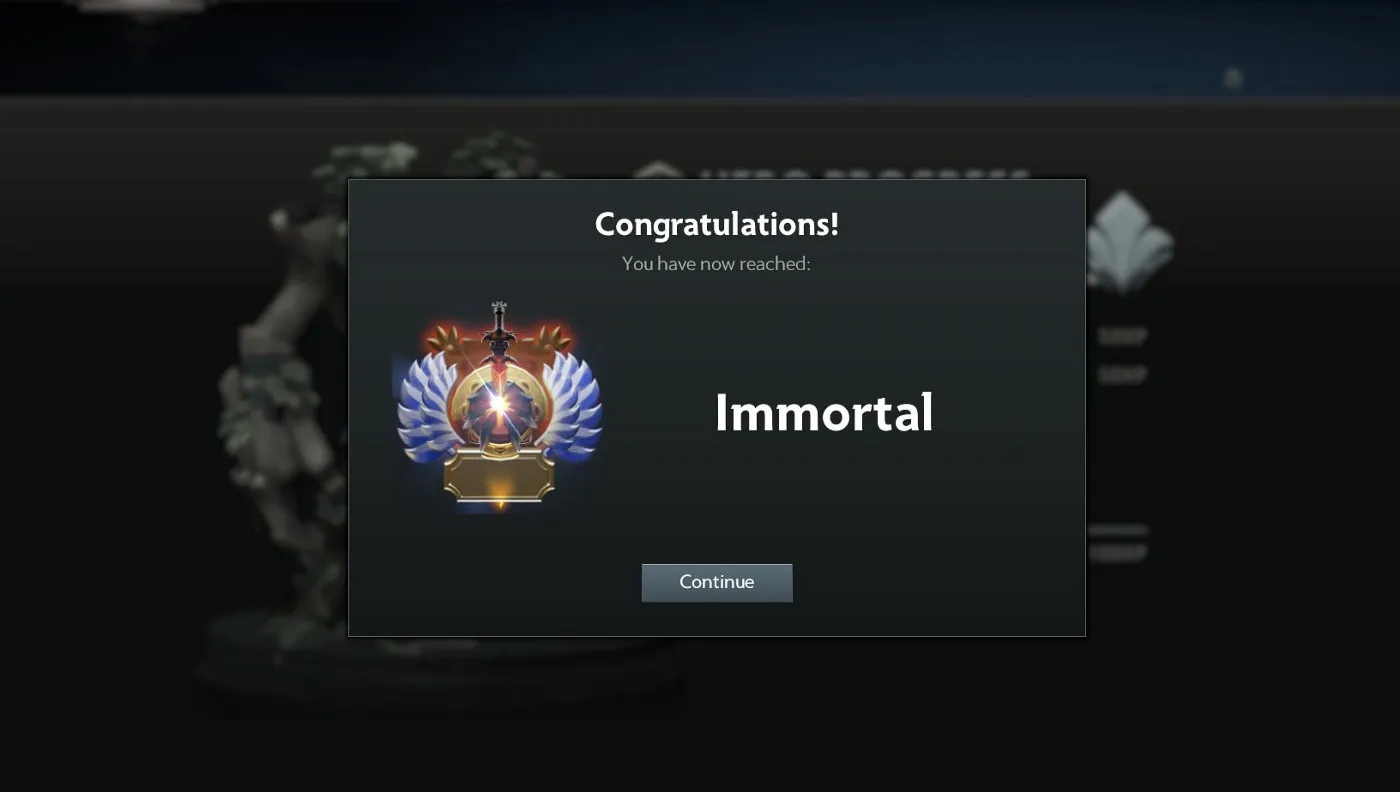
Here is a complete breakdown of the dota 2 ranks with their associated MMRs:
Needless to say, the game becomes progressively harder as you move up the ranks. At Divine rank, some people will start forming their own Dota 2 teams and compete on the professional scene. Although many gamers complain about their rank and believe they should be ranked higher, the system is pretty accurate. The ranking system is a good indication of your skill level, understanding of the game, and mental focus.
What is MMR in Dota 2?
Another category for measuring your skill level is MMR or matchmaking rating. This is a numerical value exhibited on a scale from 0 to 11,000+. Each game will add or remove from 5 to 30 MMR from your overall score. MMR is the basic value that places you in a certain rank. For example, someone who has from 5000 to 5700 will be placed in Divine rank. In other words, as your MMR increases or decreases, your rank will also change according to it.
MMR values for different types of matches
There are lots of different types of games and modes you can play in Dota 2. You can also play solo, or you can play with friends. Although most players prefer ranked matchmaking, you have to play a certain number of unranked games before you can get to it.
Each one of these game types has its own scoring system. In some cases, your MMR will be hidden. Here is how Dota 2 categorizes games and shows MMR:
How is the Dota 2 MMR Calculated?
Winning increases a player's MMR, while losing decreases it. No matter if you are playing normal, unranked or ranked matches your MMR goes up and down between 20-30 MMR for each game.
The exact formula is unknown but it depends on the following factors:
- Gold per minute (GPM)
- XP per minute (XPM)
- Kill-Death-Assist ratio (KDA)
- Last hits and denies (CS)
- Item builds, team items, support items
- Damage to heroes, damage to buildings, amount of healing
- Ward vision uptime, how much area is visible for how long
Keep in mind that winning or losing is the most important factor for calculating your MMR.
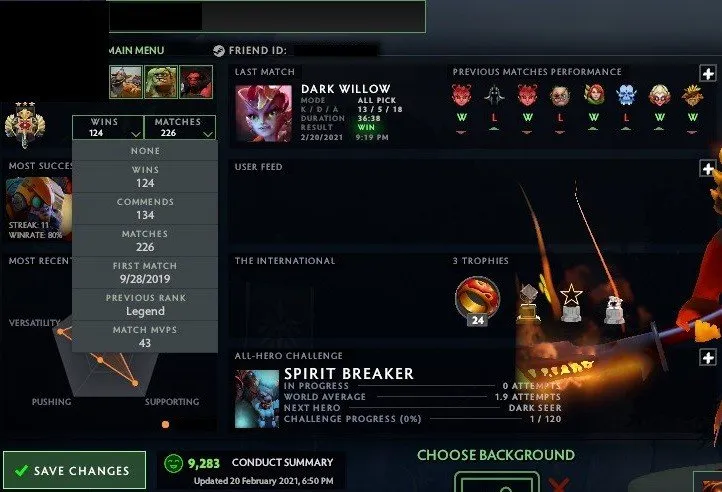
Dota 2 MMR system is very similar to systems implemented in other games. A lot of games use the "ELO" term, which originates from chess. For example, the League of Legends uses this terminology. Whether it is MMR or ELO, it refers to the same thing.
Although many players like to brag about their MMR, and it is a reference point as you progress up the rankings, the main reason for this system is so that Dota 2 can match players with similar skills. Needless to say, this would lead to more equal games and a better gaming experience.
MMR is the basis of the Dota 2 ranking system. Nowadays, most people focus on ranking tiers and medals, but MMR is the basis upon which everything is built. Furthermore, unlike ranks, MMR is the longest-standing system for calculating the skill levels of players.
As already mentioned, Dota 2 MMR goes from 0 to infinity. A few high ranking players managed to get to 11,000 MMR, so in theory, there is no limit as to how many points you can accrue. Keep in mind that the majority of players are somewhere between 2000 and 4000 MMR (see average MMR in Dota 2). Gamers who are below or above that score are a minority.
How to unlock ranked matchmaking?
Dota 2 prevents gamers from immediately joining ranked matchmaking. This is implemented so that abusers and cheaters cannot ruin the game for others. Also, a slow introduction to Dota 2 ranking system is meant to properly calibrate your score.
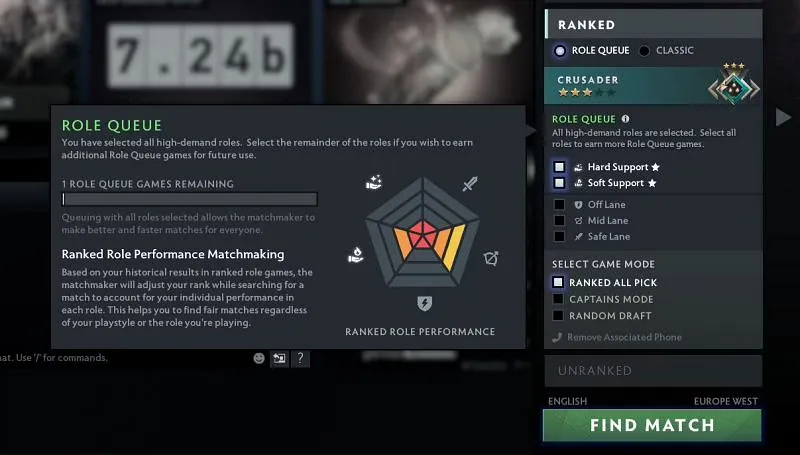
Dota 2 ranking system is very similar to any other competitive game like the CS2 (CSGO) ranking system or the Valorant Ranking System. You need to play at least 100 hours of unranked games to be eligible for ranked games. Here are the exact requirements that would allow you to play ranked matchmaking:
- You need to play at least 100 hours of Dota 2 unranked games. Both unranked and ranked matchmaking have their own separate scoring systems. Although you won’t see unranked MMR, you will always be placed in games with people who are of a similar skill level.
- While unranked games have their own hidden scoring system, this score will later on be used to assess your initial ranked score. So, these initial unranked games can be very important as they would allow you to reach a higher tier within ranked matchmaking without playing a single game.
- The unranked system is able to assess your skill level rather quickly. If you create a smurf account and start stomping the unranked opposition, the Dota 2 ranking system will assign you to a much harder unranked tier after just 25 to 30 games.
- Your account needs to be at least level 20 in Dota 2
- After playing the initial 100 hours of Dota 2, you will need to add a phone number to your Steam account. This would provide an additional verification layer to your Dota 2 account. As you can presume, this is a very important step as it could prevent any abuse pertaining to multiple accounts.
- Once you add a phone number, you will be able to change it whenever you want. However, if you wish to reuse that number once again, you won't be able to do so for at least 3 months.
- When you finally play the initial 100 games and you provide a valid phone account to steam, you will have to play 10 calibration games. Keep in mind that the Dota 2 ranking system will already approximate your score, so 10 games will be more than enough to give you an appropriate placement. Once you've played these 10 games, you will get your first medal and will be assigned to a specific tier.
When you get your initial score, you will be able to play ranked games. Always remember that MMR is a fluctuating category so, as you improve your skill, you can make significant improvements to your rank. You can reset your Dota 2 MMR every season if you wish to do so.
Dota 2 seasonal rank medals
For the longest time, Dota 2 relied exclusively on MMR for categorizing players. It was always a good system, but sometimes dull. So, in November 2017, they decided to add ranks as an additional layer to it. New ranks and medals were an instant hit increasing the overall number of players by 17%.
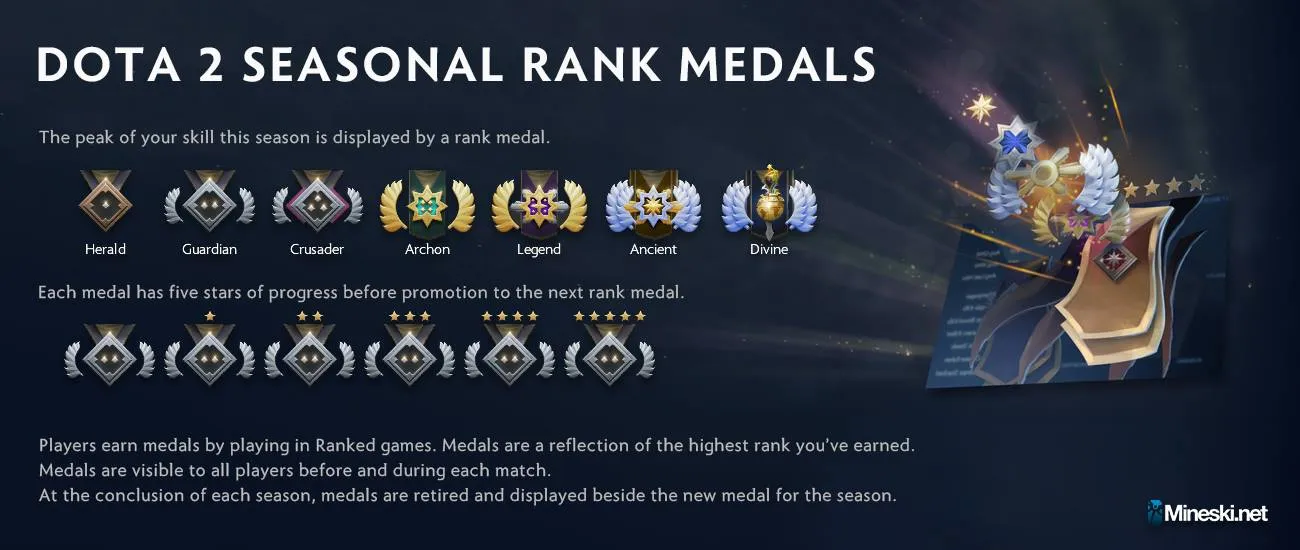
Ranks and medals are awesome as they help distinguish players in tiers. Previously, you only had MMR, which tends to be an ambiguous category. Now, with tiers, there is something to strive for. You can say that you've entered the Divine tier or Immortal tier and brag your friends about it. While MMR is also a good way to showcase skills, it often feels intangible.
Why are ranks and MMR so important?
Here are some of the main reasons why MMR and ranks are so important for Dota 2:
- MMR is a good way to assess your skill and it gives you something to brag about. Every point matters as you progress to the higher tiers of competition. With the introduction of ranks and medals, now we have a better visual representation of that scoring system.
- Both MMR and ranks are crucial for competitiveness. Without them, the game would feel like an endless grind without start and finish.
- If you’re a professional player or striving to become one, MMR can provide tangible goals. For example, you can strive to increase your rank by 200, 300 MMR each week. This pushes players towards their dreams and professional goals.
- They are also very important when recruiting players. MMR is a good way to determine a player's skill level and based on that, you can decide whether or not to invite this person to your team.
- MMR also helps the Dota 2 system as it makes it simpler to create matches with equally skilled gamers.
Furthermore, MMR, rank, and medals are the main reason why most people prefer ranked matchmaking instead of unranked. There is always a feeling you’re battling for something, which makes for a much more fulfilling gaming experience. Unfortunately, it can also lead to some negative effects like raging, trolling, smurfing, etc.
How does Dota 2 rank distribution look like?
Dota 2 rank distribution refers to player distribution across various tiers. It is measured in percentiles.
So, for example, if you are in Herald 1 tier, you will belong in 0.03 percentile. In other words, there will be 99.7% players better than you. If you’re Ancient 1, you will belong in 85.35 percentile of players or there will be only 14.65% of players better than you.
By comparing two percentiles, you can also determine how many players are within one tier. For example, 72 percentile of players belong to Legend 2 tier and below. On the other hand, Legend 3 makes for 75.84 percentile. By deducting one from another, we can conclude there is 3.84 of players in Legend 3 category.
Here is how the rank distribution looked like in the newest season. Keep in mind that these percentiles change over time, but they are very similar from month to month:
If you want to know more about this topic, then check out our in-depth article about the Dota 2 Rank Distribution for the newest season.
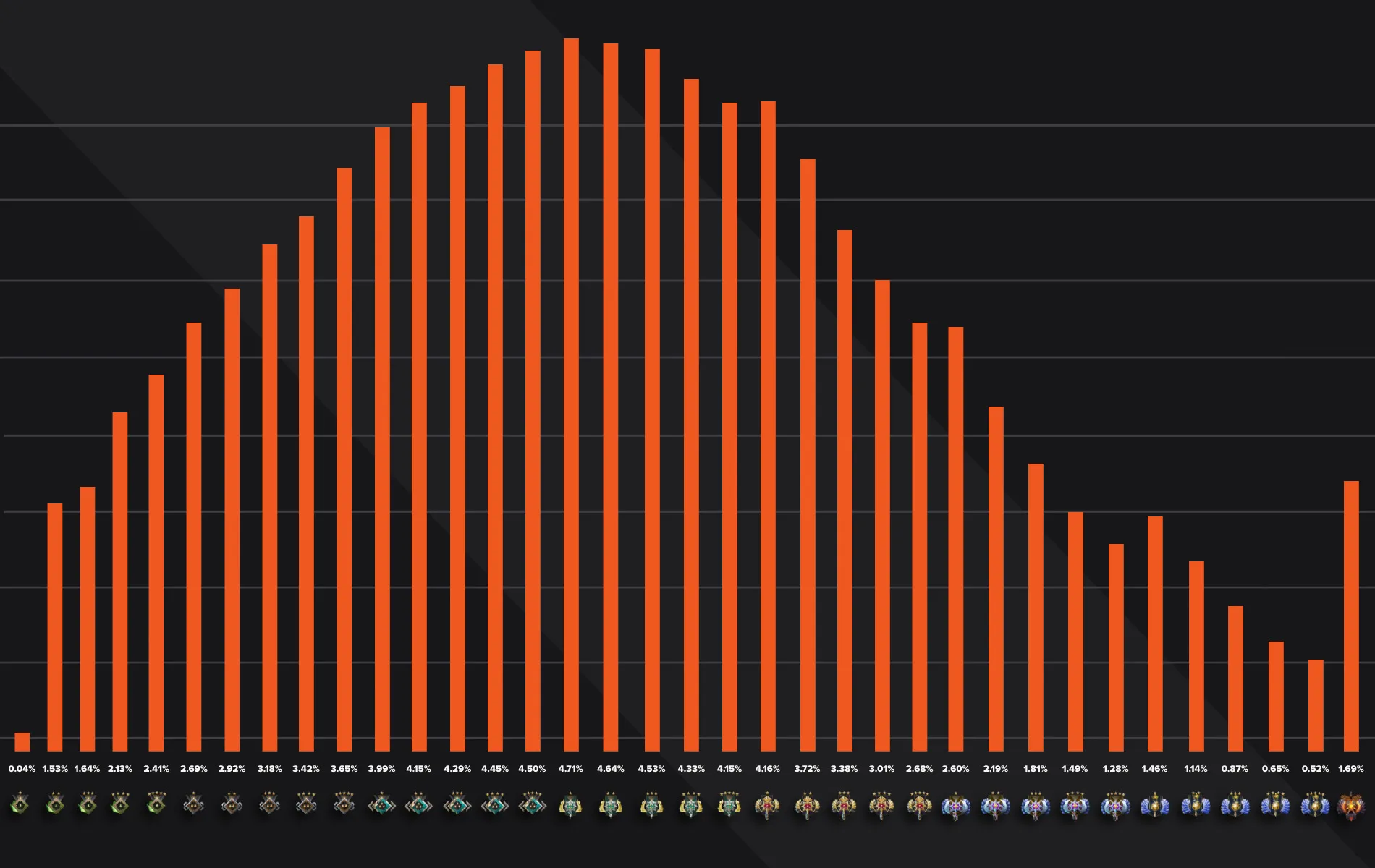
What do I have to know about the role queue?
Role queue is a relatively new thing. It is meant to prevent having too many core players in a game.
You see, most people want to play carries and be the most important person on a team. Because of that, there were always more carries and cores than necessary. As a result, the gameplay often suffered. With the role queue, we finally have a way of addressing the issue.
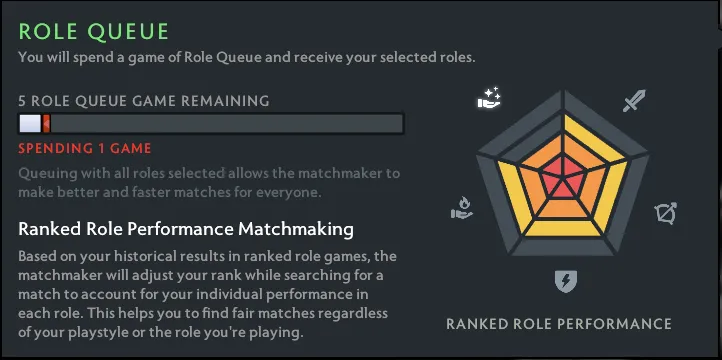
Valve started working with this system back in 2019. Today, it is completely perfect, and it allows players to switch between support and core roles. Basically, core roles are all the positions from 1 to 3 (carry, mid, and offlaner), while support roles are positions 4 and 5 (soft and hard support).
The main purpose of this queue is to create a team composition where every player plays his role. You won't have games with 5 cores where people fight for their farm. Role queue is especially troublesome for people who want to play core roles at all costs. They would have to wait for a much longer period of time as Dota 2 looks for a suitable game. On the other hand, support players will get into a game almost instantaneously.
Another purpose of role queue is to allow players to play a role they’re comfortable with. That way, they won’t lose games because they were forced to play heroes and positions they’re not familiar with. This is especially important in lower tiers where players are unable to switch that easily between roles.
How can I progress through the Dota 2 ranking system?
Everyone who plays ranked games wants to increase their rank as soon as possible. Gamers employ different strategies in an attempt to boost their scores, from spamming the same hero to using exploits.
We have a dedicated article on tips on how to rank up faster in dota 2.
Sometimes, no matter how hard you try, it can be difficult to increase your MMR and rank. Some guys are in Guardian, Crusader, and Archon for months and even years, without being able to budge. Luckily, there are a lot of different things you can do to increase your skill level and reach higher tiers of Dota 2:
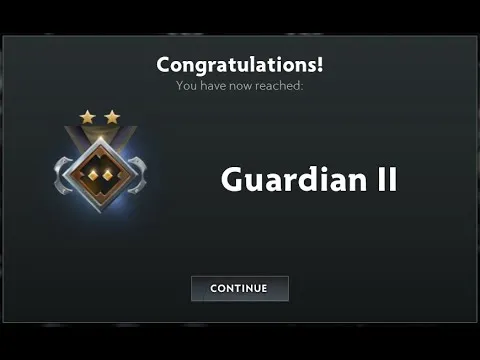
- Start watching professionals. Dota 2 has a lot of small intricacies that you might not be able to learn at a lower level. By watching the highest ranked individuals, you will be able to pick up these small tricks that will significantly improve your performance regardless of the rank that you’re in.
- Only play when focused. Dota 2 is a game that requires concentration and quick reactions. When players lose several games in a row, they get an urge to play even more to restore their lost MMR. This is usually a mistake as it can affect your performance leading to additional losses.
- Try to play all heroes. Valve makes regular updates during which they will buff or nerf some of them. Whether you like it or not, you increase your odds of winning by playing meta heroes.
- Don't try crazy stuff in ranked games. Players like to tinker with their builds and hero choices. More often than not, this leads to unnecessary losses. If you wish to try something new, you can always do it in a party or unranked game.
- Practice makes perfect. If you wish to master this game, you have to be heavily invested (especially in higher tiers). Casual playing will not suffice, especially when we consider the steep competition.
Progressing through ranks often takes time. Just be patient, and try to develop your game without rushing.
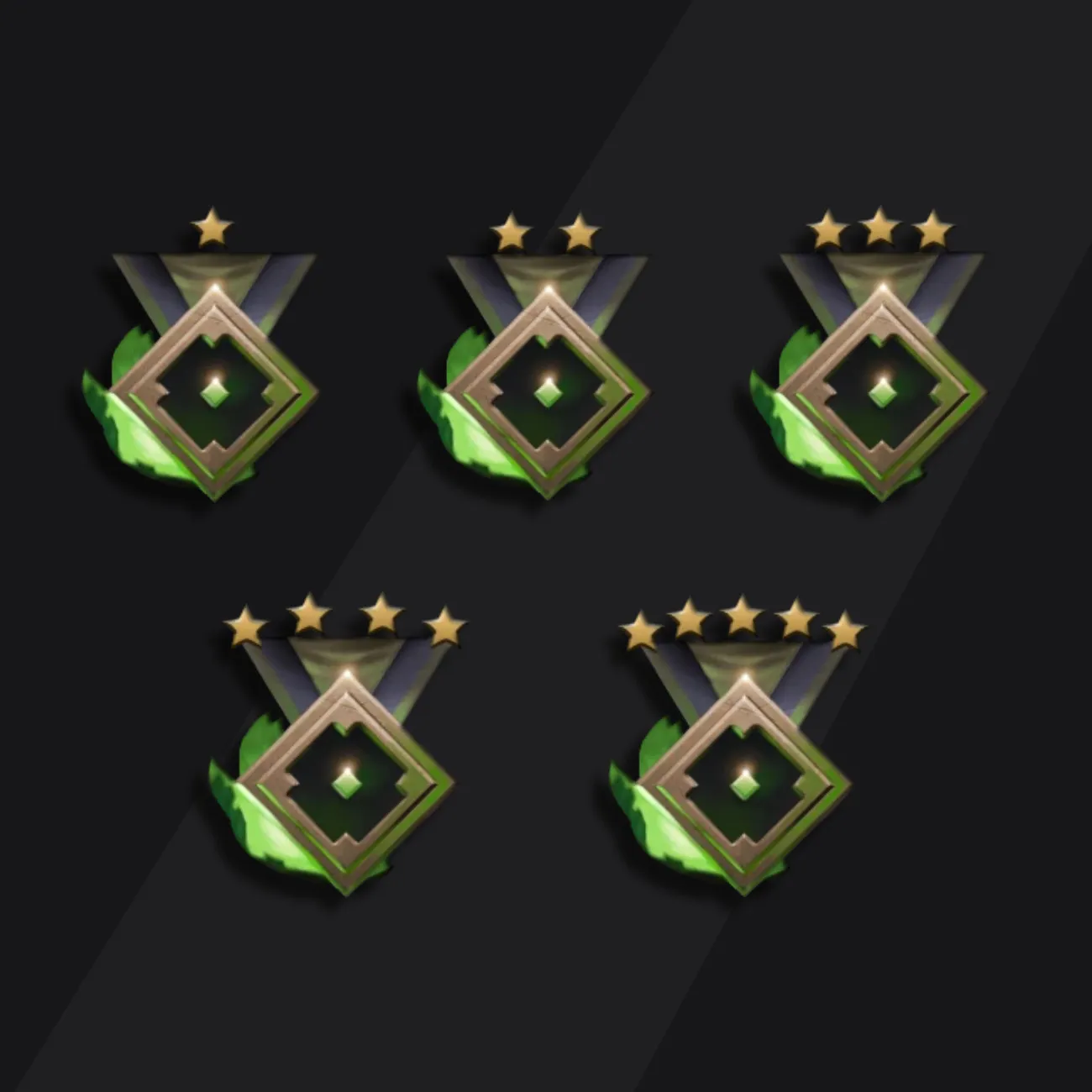
Common issues with ranked games
Although ranked matchmaking is meant to provide balance, eliminate negative behavior, and improve the gaming experience, there are still some issues with it. Here are some of the main problems that are caused directly or indirectly by MMR, ranks, and trophies:
Smurfing
Smurfing refers to situations where high tier players create a new account so they can mess around in lower tier games. Needless to say, this will ruin the experience for the opposition as they won’t have the necessary skills to deal with this individual.
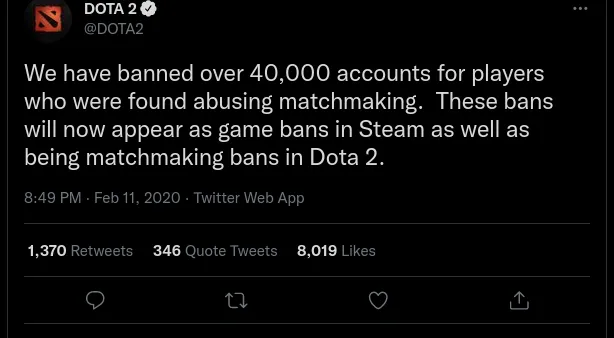
There are several reasons why players smurf. For example, they might like beating the weaker competition. Some of them are also boosting other players' accounts or selling fresh accounts.
Valve has done a lot to address the smurfing problem. One of the main ways they've done this is by increasing the number of games a person has to play before calibration. Nowadays, you have to play 100 hours of Dota 2 before being calibrated and assigned a rank.
Party ranked games
The hardest thing for Dota’s algorithm is to set up proper, balanced party games. This is especially true if you and your friend have completely different MMRs. In most cases, Dota 2 will take its time finding the right game for your party. But even then, there is no guarantee that you will have a fair, balanced gaming experience.
If there is a major MMR discrepancy between you and your friend, there is a good chance that one of you will have a lousy experience. For example, if you get into a higher ranked game, the party member will a low score will struggle to keep up. Alternatively, lower tier games will lead to a stomp due to the fact you have a high tier player in your party.
Losing games on purpose
Another nasty issue that sometimes occurs is players losing games on purpose. For example, you might be dropping a game because your friend is on another team, and you wish to boost his score. Occasionally, players will lose a game out of spite because someone on their team was mean to them. While this also occurs in unranked games, it is more common for ranked games because of increased pressure.
No matter the reason, losing games on purpose affects everyone's experience, and it is one of the hardest things for Valve to improve.
Raging
Like any other game with a strong competitive scene, Dota 2 is notorious for its raging players.
This type of behavior is nothing new in online games. But it can be really nasty in Dota 2. Given that these games last for a long time (on average 30 to 40 minutes), listening to someone rage for the whole duration will have a negative effect on everyone involved. Not only does this ruin the gaming experience, but it can force gamers to stop playing Dota 2.

Raging can manifest in all sorts of ways. A player might start feeding, pinging all over the map, shouting in the mic, and so on. Valve has done a lot to address the issue by allowing players to assess each other. As a result, a player who behaves poorly can get a communication or matchmaking ban. That way, Dota 2 can restrict voice communication or put a player in a low-priority matchmaking pool.
Despite all these measures, raging is still a major issue for all competitive games and there is a small chance that it will even be addressed in a proper manner.


.svg)


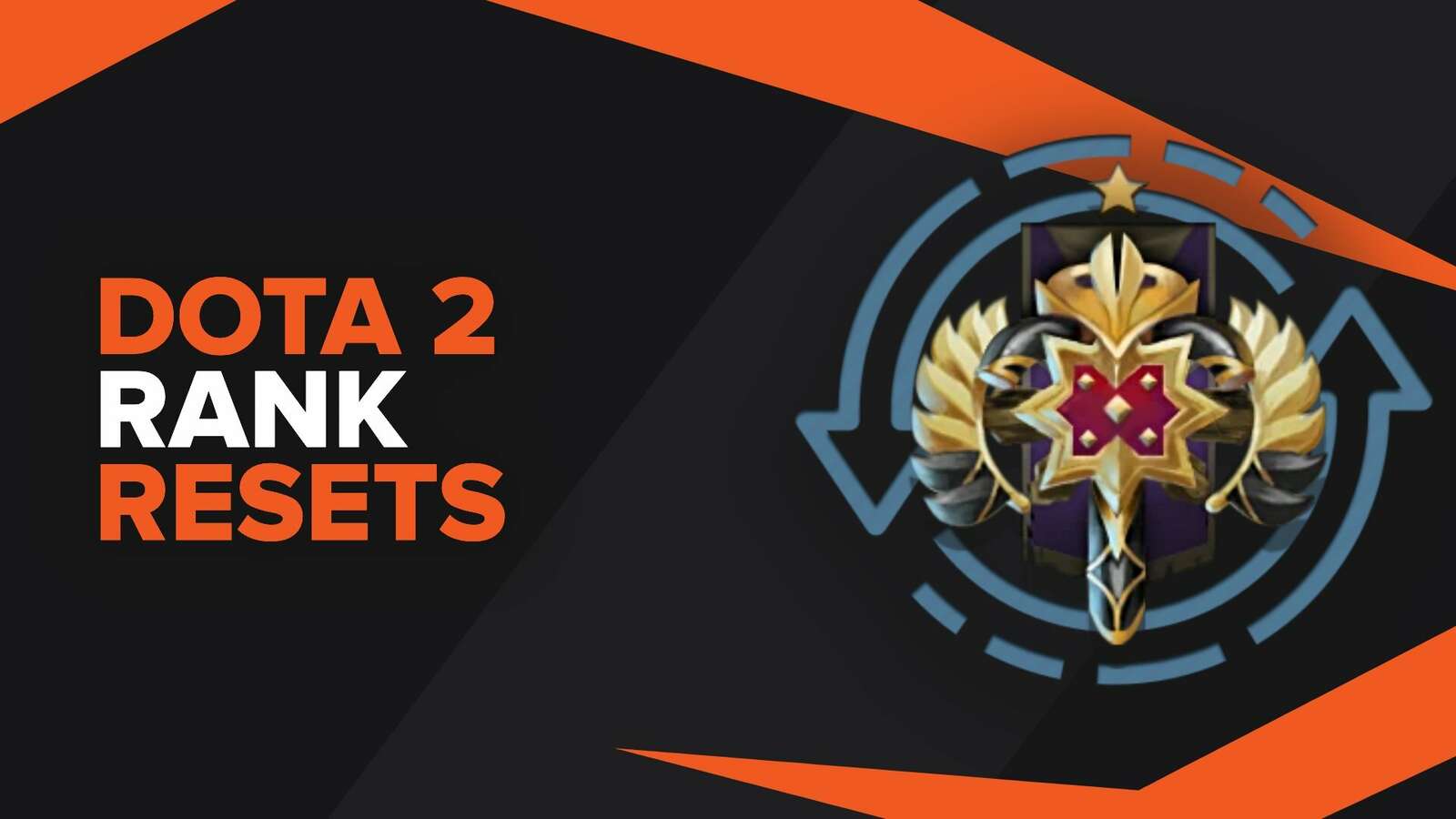
![5 Best Sites to Buy Dota 2 Items with Paypal [Safe & Legit]](https://theglobalgaming.com/assets/images/_generated/thumbnails/3332583/Best-Dota-2-item-Websites_03b5a9d7fb07984fa16e839d57c21b54.jpeg)
![How to Fix Packet Loss in Dota 2 Quickly? [5 Working Ways]](https://theglobalgaming.com/assets/images/_generated/thumbnails/819504/dota-2-how-to-fix-packet-loss-connection-gaming_03b5a9d7fb07984fa16e839d57c21b54.jpeg)
![Is Ancient Rank in Dota 2 Good? [MMR, Distribution & More]](https://theglobalgaming.com/assets/images/_generated/thumbnails/62633/622a3c9d596b09ca1b8d644c_dota20220ancient_03b5a9d7fb07984fa16e839d57c21b54.jpeg)